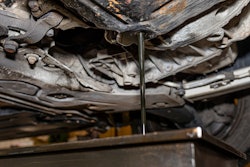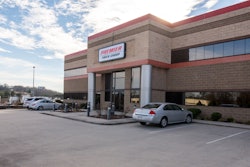
There were more than 750,000 active trucking operations registered with the U.S. Department of Transportation (DOT) in 2023. Among active carriers, more than 443,000 operate equipment that is at least eight years old, on average, per RigDig Business Intelligence (RDBI), sister company of Trucks, Parts, Service.
If you’re in the used equipment space, the confirmation that most trucking operations run out-of-warranty equipment isn’t new. But what might be a revelation is how that data breaks down.
RDBI data indicates DOT-registered carriers using equipment eight years old and older operate 1.19 million vehicles and 619,000 trailers (both verified totals; actual numbers are likely higher). RDBI’s data also indicates among those carriers, 78% operate four pieces of equipment or less.
Selling multiple pieces of used equipment to a single customer at one time can unquestionably be lucrative. But it’s also rare.
Most people looking for a used truck or trailer at any given time only need one unit. They might be on the market for the first time in years. And after they make their purchase, they likely exit the market again for a period.
[RELATED: Freightliner's Cascadia is the most popular truck on the road. What's No. 2?]
If you’re a used equipment dealer who wants to lock down the new customer who walks in your door or calls or emails you out of the blue, you better be prepared. Just because there’s 443,000 used equipment-backed operations out there does not mean you can’t know all of them. At least a little bit.
By leveraging market research and carrier demographics, used-equipment operations can access data sets to inform any sales interaction.
Know your market
Every equipment dealer understands the value of market expertise, and with data sources like RDBI (or similar tools), it has never been easier for dealers to identify and evaluate all potential customers in their area of operation.
RDBI enables users to identify prospects by state, county, city and ZIP code, and then complements that search specificity with details on prospect operational size, market segments, equipment types, powertrains, vehicle inspection data and more.
For established, successful salespeople, fleet demographic solutions accentuate hard-earned customer knowledge and provide another resource dealers can leverage to maintain a customer’s business.
For a new or inexperienced salesperson, they’re the ultimate cheat sheet. An extremely robust data repository that ensures no salesperson enters a sales call uninformed.
And because these tools include all active, DOT-registered carriers, they also ensure no potential local customer can slip through a dealer’s hands.
In the used equipment space, this value cannot be overlooked. A customer that buys one piece of equipment every five years might not be known to everyone, but when their purchase cycle comes back around and they show up on a dealer’s lot, fleet data tools ensure they can be approached intelligently.
Know your region
The same can be said for customers who materialize from other areas. In the age of digital sales, used equipment dealers must be prepared to field questions from customers anywhere. Particularly customers with small operations that may prefer or require a specific vehicle type.
[RELATED: Leveraging driveaway services vital to used sales success]
It’s unrealistic for used equipment dealers to be expected to pinpoint customers from other areas that might be intrigued by their inventory; it’s not unrealistic to presume once those customers reach out that dealers can respond quickly with thorough, strategic sales calls.
RDBI provides dealers access into all fleet demographics — not just the longtime buyer or the carrier down the block.
And this isn’t just advantageous for one-off customer interactions either.
Dealers also can use fleet data to uncover if their city, county, state or another predetermined region favors a specific OEM, engine model or model year. They can show where a specific duty cycle may make up a larger than normal operating segment in a region, or where small or medium-sized fleets are most likely to exist if a dealer is trying to break into a new market.
Carrier data enables used equipment dealers to track where possible customers could come from, or where to seek them out.
Know your inventory
In a soft used-equipment market, the latter can sometimes be a life raft for an inventory-heavy dealer. The aforementioned multi-unit used truck sale is always a salesperson’s goal when receiving a batch of similar models in a trade package, but that’s rarely the reality.
Most groups of duplicate equipment must be offloaded through wholesale or auction channels, shipped to a region where they have more value. That’s again where fleet demographic data is useful.
With RDBI, used equipment dealers can identify not just regions but specific fleets operating equipment with specifications similar to the trucks in their inventory, and then use other tools to market that equipment directly to those carriers.
This not only ensures a dealer’s marketing dollars are spent targeting possible customers most likely to be swayed by their products, it also, ideally, reduces inventory turns. If customers within and outside a region who operate a specific piece of equipment don’t bite at advertisements for similar units, then a dealer can move on from that equipment quickly and minimize the deprecation hit.










